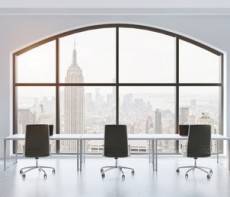June 6, 2016
Pressure at work ties majority of UK workers to their desks for lunch 0
 Many UK workers are under so much pressure they can’t escape their workplace for lunch, with almost three in five employees regularly eating at their desk. This could be having a detrimental long-term effect on the health of millions of workers across the UK. The results of a survey, commissioned by the National Charity Partnership, a collaboration between Diabetes UK, the British Heart Foundation (BHF) and Tesco, found that office workers say heavy workloads (32 per cent), workplace culture (14 per cent) and stress (13 per cent) are to blame for not getting away from their desks for a walk at lunchtime. Despite more than nine in ten employees reporting that being outside makes them feel healthier or more positive, more than half of workers who were questioned (52 per cent) never leave their office for lunch. Almost one in four (24 per cent) say they regularly work through their break.
Many UK workers are under so much pressure they can’t escape their workplace for lunch, with almost three in five employees regularly eating at their desk. This could be having a detrimental long-term effect on the health of millions of workers across the UK. The results of a survey, commissioned by the National Charity Partnership, a collaboration between Diabetes UK, the British Heart Foundation (BHF) and Tesco, found that office workers say heavy workloads (32 per cent), workplace culture (14 per cent) and stress (13 per cent) are to blame for not getting away from their desks for a walk at lunchtime. Despite more than nine in ten employees reporting that being outside makes them feel healthier or more positive, more than half of workers who were questioned (52 per cent) never leave their office for lunch. Almost one in four (24 per cent) say they regularly work through their break.






























May 6, 2016
Can building design presage the decline of the world’s tech giants?
by Mark Eltringham • Architecture, Comment, Technology, Workplace design
(more…)